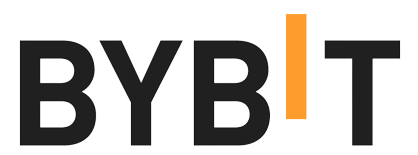Non-fungible tokens, or more so NFTs, are the revolutionary power in this digitized globe. They allow artists to connect with collectors and investors in ways that have never been seen or tried.
Even though the world of nft is full of challenges, as popularity and demand continue to increase, it is becoming paramount that their proper nft evaluation and authentication are kept in check. This paper is going to take you through the basic processes for assessing and verifying the authenticity of NFTs so that you make appropriate decisions and you can understand how people can make money with NFTs!
Understanding NFT Evaluation
Evaluating an NFT project or individual token is crucial before making any investment or purchase. Here are the key factors to consider:
Artist or Creator Reputation
Research the artist or creator behind the NFT. Look for:
- Previous work and success in the traditional art world or digital space.
- Social media presence and engagement with their community.
- Collaborations with established brands or other respected artists.
Project Fundamentals
When evaluating NFT projects, consider:
- The project’s roadmap and long-term vision.
- The team behind the project and their experience.
- Community size and engagement levels.
- Utility and real-world applications of the NFTs.
Scarcity and Uniqueness
Assess the rarity of the NFT:
- Limited edition or one-of-a-kind pieces are generally more valuable.
- Check the total supply of tokens in a collection.
- Look for unique traits or attributes that set the NFT apart.
Market Demand and Liquidity
Evaluate the market interest:
- Check trading volume and price history on NFT marketplaces.
- Assess the frequency of sales and resales.
- Look for sustained interest rather than short-term hype.
How to Authenticate an NFT
Authentication is crucial to ensure you’re dealing with legitimate NFTs. Here’s how to verify NFT authenticity:
Blockchain Verification Check the blockchain explorer (e.g., Etherscan for Ethereum-based NFTs). Verify the token ID and smart contract address. Ensure the NFT is minted on a reputable blockchain.
Marketplace Verification Purchase from established NFT marketplaces with verification processes. Look for blue check marks or other authentication symbols. Be cautious of deals that seem too good to be true.
Digital Signature Verification Many artists include digital signatures in their NFTs.
Learn how to verify these signatures using blockchain tools.
- To verify digital signatures on NFTs using blockchain tools, start by identifying the smart contract address and token ID of the NFT.
- Use a blockchain explorer like Etherscan (for Ethereum-based NFTs) or SolScan (for Solana) to trace the token’s minting transaction. This allows you to check the creator’s wallet address and ensure it matches the public address of the original artist or creator.
- You can also utilize tools like MetaMask or Nifty Scanner to verify cryptographic signatures directly. These tools confirm whether the NFT was signed by the original creator, ensuring its authenticity through cryptographic validation
Community and Social Proof Check the artist’s official social media accounts for announcements. Look for community discussions and confirmations of authenticity.
Be wary of impersonators and fake accounts.
Tools for NFT Authentication
Several tools can help with nft authentication:
- Blockchain explorers (e.g., Etherscan, PolygonScan)
- NFT-specific analytics platforms (e.g., Nansen, DappRadar)
- Digital signature verification tools OpenZeppelin’s TokenVerifier, Nifty Scanner, MetaMask
Red Flags in NFT Evaluation
Be cautious of:
- Sudden price spikes without clear reasons.
- Lack of information about the creator or project team.
- Promises of guaranteed returns or unrealistic growth.
- Copycat projects or plagiarized artwork.
Conclusion
Evaluating and authenticating NFTs requires diligence and research. By considering factors such as artist reputation, project fundamentals, scarcity, and market demand, you can make more informed decisions on how to evaluate an NFT.
Always verify the authenticity of an NFT through blockchain exploration, marketplace verification, and community consensus. Remember, in the world of NFTs, knowledge is your best tool for navigating this innovative digital landscape.
With these guidelines, one would be better armed in the research of projects concerning NFTs and in the verification of the authenticity NFT of individual tokens, therefore making the NFT space much safer and more rewarding.If you are looking for a wallet for your NFTs, be sure not to miss this guide that the Bitcoinsensus team has prepared for you.





